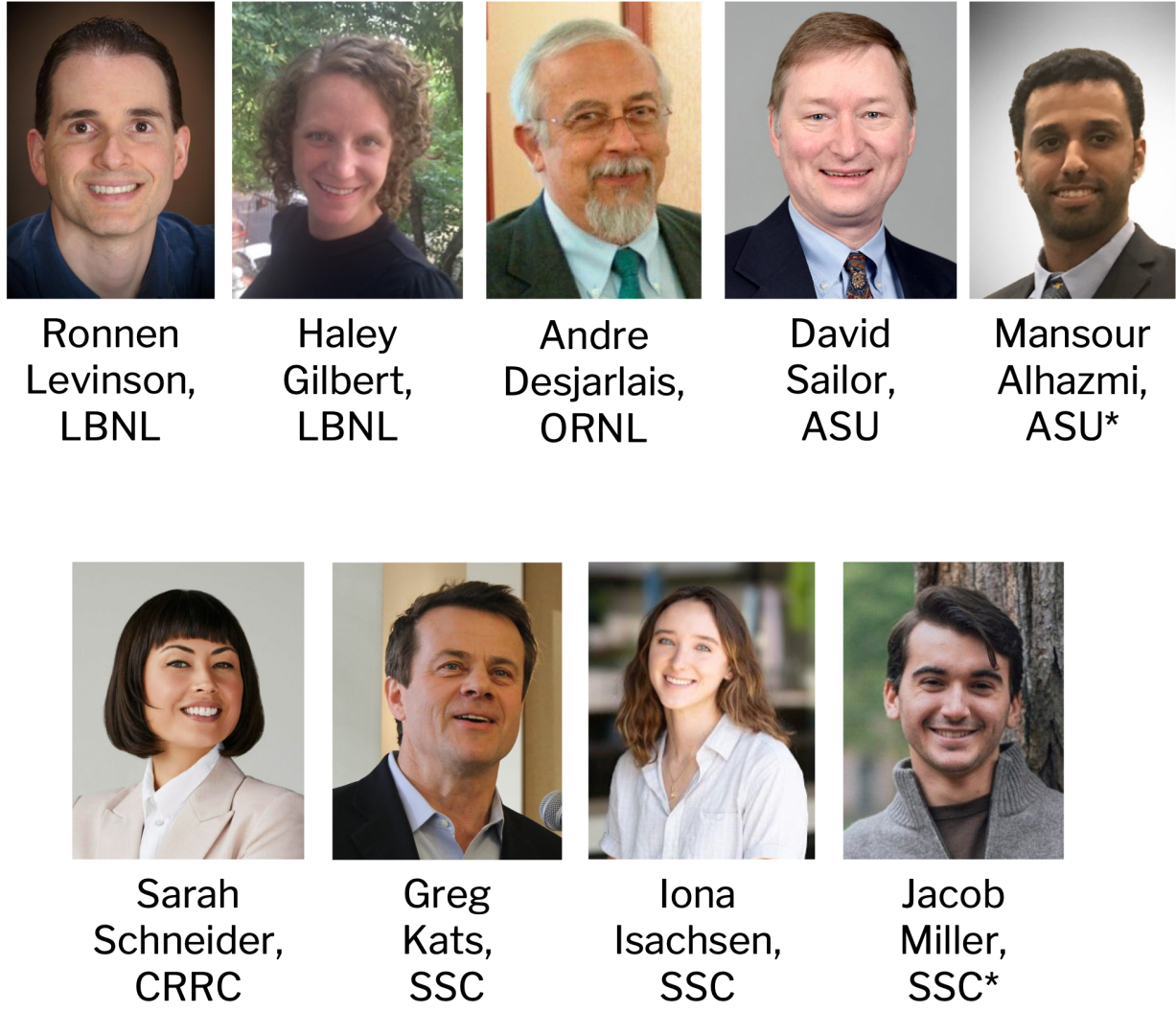Cool Surfaces
United States Cool Surfaces Deployment Project
Accelerating the deployment of cool surfaces across the United States
Mission
Solar-reflective building envelope surfaces, such as cool roofs and walls, can be especially helpful in disadvantaged communities that often have poorly insulated older homes, aging or absent air conditioning units, steep utility bills, polluted air, and high vulnerability and exposure to extreme heat. With support from the U.S. Department of Energy, the U.S. Cool Surfaces Deployment Project seeks to dramatically increase the climate-appropriate deployment of cool surfaces across the United States with an emphasis on their application to disadvantaged communities.
Project Objectives
 |
 |
 |
||
Technical Assistance |
Educational Campaign |
Demonstration Projects |
||
| Provide support to federal, state, and local government officials to incorporate cool roofs and walls into their program guidance and into building specifications | Launch the "Keep Your Cool" educational campaign to inform stakeholders and the general public on how cool surfaces keep unwanted solar heat out of our homes, workplaces, and communities | Initiate scalable demonstration programs that bring cool surfaces to disadvantaged communities to provide local examples and data on the performance of cool surfaces |
Webinar
The Phase 2 webinar was held on Friday, February 9th, 2024. Please see below for presentation slides and a summary of the webinar. If you would like to join our “Keep Your Cool” education campaign or our high-profile demonstrations team, please use the following google form to express interest.
Publications
- Levinson, R., Alhazmi, M., Becce, J., Desjarlais, A., Gilbert, H., Kats, G., Miller, J., Morin, E., Sailor, D., & Schneider, S. (2023). United States Cool Surfaces Deployment Plan. Lawrence Berkeley National Laboratory. https://doi.org/10.20357/B7602K [open access]
- Alhazmi, M., Sailor, D. J., & Levinson, R. (2023). A review of challenges, barriers, and opportunities for large-scale deployment of cool surfaces. Energy Policy, 180, 113657. https://doi.org/10.1016/j.enpol.2023.113657 [closed access]
- Alhazmi, M., Sailor, D. J., & Levinson, R. (2023). A review of challenges, barriers, and opportunities for large-scale deployment of cool surfaces [preprint]. ASU Scholarship Showcase. https://hdl.handle.net/2286/R.2.N.187989 [open access]
Project Background
A brief history
With support from the Building Technologies Office of the U.S. Department of Energy, in Phase 1 of the U.S. Cool Surfaces Deployment Project (2022-2023), a deployment plan was developed with input from stakeholders. A set of 19 transformative ideas form the core of the deployment plan (Levinson et al., 2023).

Where we are today
The Building Technologies Office is now supporting Phase 2 of the project, the implementation of three transformative ideas: a “Keep Your Cool” educational campaign, high-profile cool roof/wall demonstrations in disadvantaged communities, and technical assistance to governments.
As part of Phase 2, the project team conducted interviews with home builder associations to fill a gap identified in the Phase 1 deployment plan. Takeaways from these additional interviews can be viewed below.
Meet the project staff

* = past member
